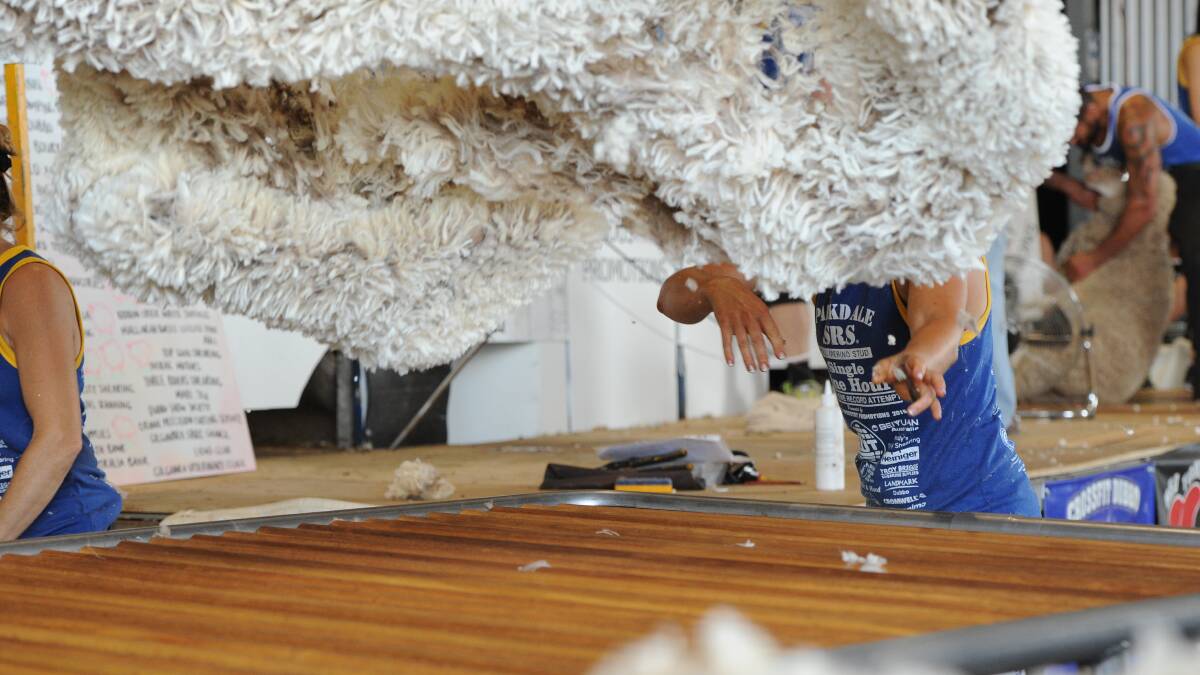
Wool's benchmark Eastern Market Indicator is tipped to rise by 12 per cent from the previous year, averaging 1300 cents per kilogram clean for 2021-22.
Subscribe now for unlimited access to all our agricultural news
across the nation
or signup to continue reading
This is according to the latest Australian Agricultural Bureau of Resource Economics and Sciences (ABARES) forecast which is also predicting a 33pc slide from the EMI's peak in 2018-2019 due to lower consumer demand and supply-chain disruptions off the back of Covid-19.
G.Schneider southern region wool manager Mark Symes said he believes the next six months will be difficult for the Australian wool market.
"Whilst we are seeing a rally at the moment, based on good demand, obviously the global situation with the Covid pandemic is still at the forefront of every economy and everybody's mind," Mr Symes said.
"It's now about how you manage that to create confidence within the consumer spending sector.
"I think we are still going to see hand knitting yarns in a healthy situation and the expectation of growth in that portion of the market."
In the medium-term forecast, an increase in global economic growth over to 2025-26 is expected to lead to higher wool prices, especially for superfine and fine micron wools used in woollen apparel, ABARES said.
However, this will rely on a faster suppression of Covid-19 and earlier easing of associated restrictions which would result in higher consumer demand for woollen apparel and textiles leading into and during the 2021-22 northern hemisphere winter.
Recovery in demand for woollen apparel in key markets will continue to be subject to containment or vaccination measures to control Covid-19 meaning that the forecast increase in Australian wool prices is expected to remain modest, at least until export demand for Australian greasy wool returns to pre-Covid levels.
Mr Symes said the demand for good, sound and stylish fine Merino wool will remain relatively healthy.
"I think we will run short through the next six months with broader microns coming through due to better seasonal conditions and also traditional autumn shorn wools carry a little more dust, burr and seed so the quality of fine wool tends to tapper off a little," he said.
"The area that I predict is really going to struggle is the crossbred lambs.
"Due to the nature of them, the problems we have with length and quality due to kemp, this is an area that fluctuates dramatically and with larger volumes coming onto the market we will see some significant fluctuations in that area.
"Merino cardings I think we will remain strong, with continued good activity there in the carbonising scouring fields."
ABARES said wool supply is predicted to continue increasing gradually from 2021-22 onwards due to continue flock rebuilds, after its small rise of 2pc for the 2020-2021 season of 288,000 tonnes.
The ripple effect on the industry from low auction offerings and clearance rates relative to the volume of wool tested throughout 2019-20 and 2020-21 resulted in bales being held on-farm as well as in storehouses.
In the short to medium-term, wool price growth is expected to be dampened by the supply of wool exceeding demand until bales are cleared.


